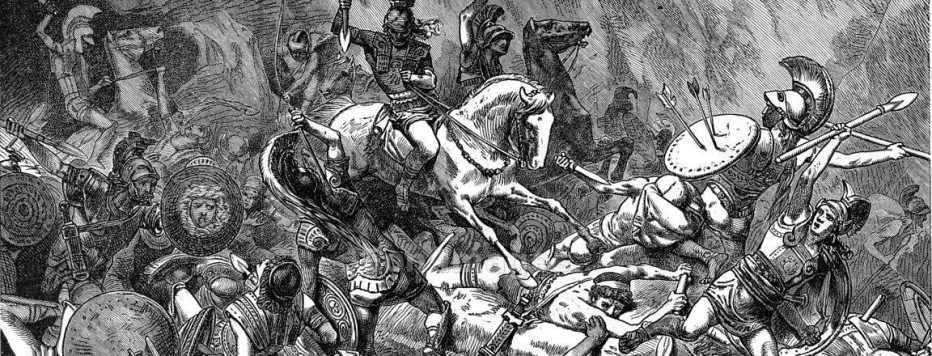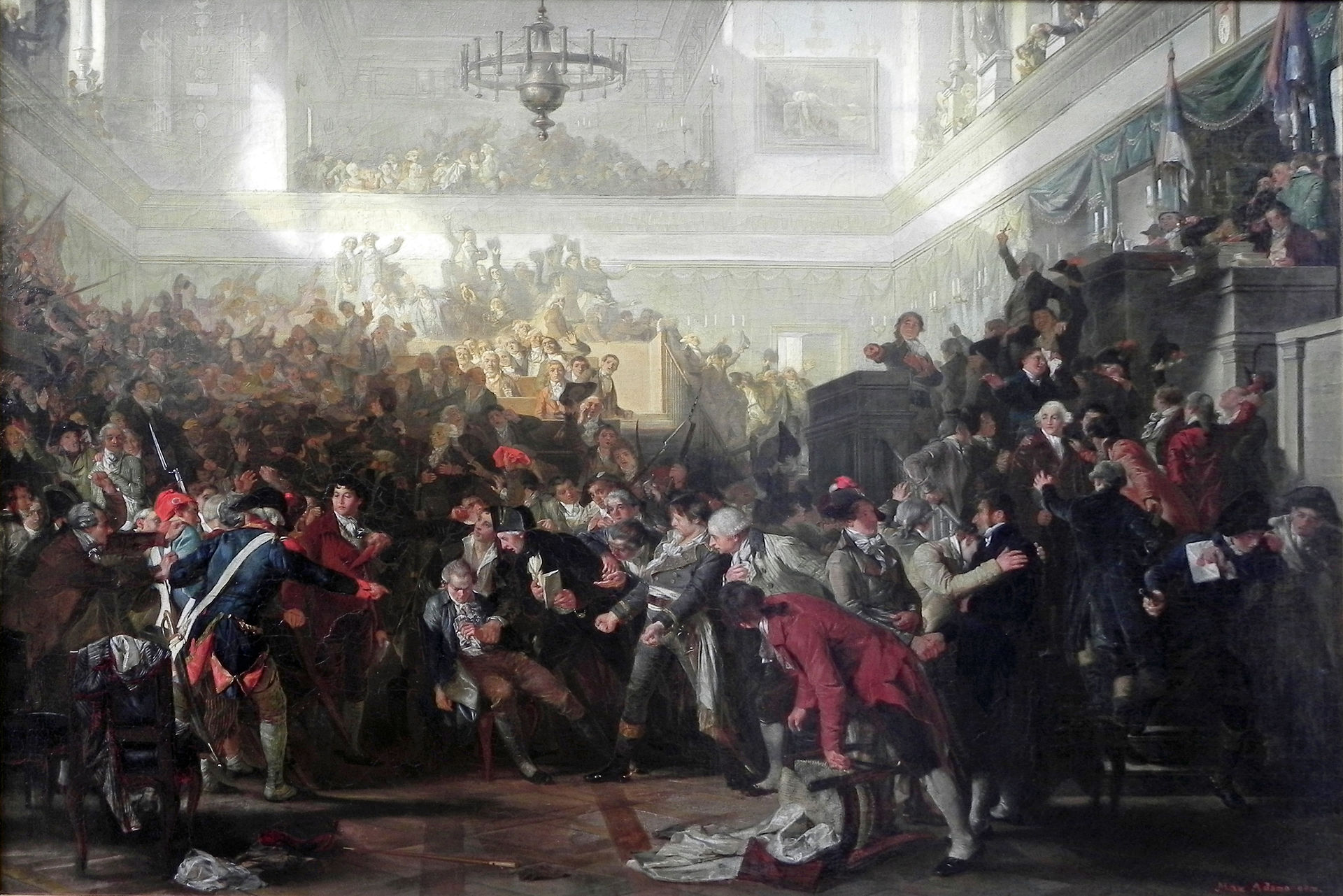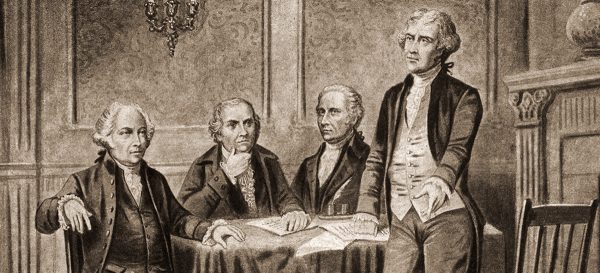In 2010, Claremont Institute Senior Fellow Angelo Codevilla reintroduced the notion of "the ruling class" back into American popular discourse. In 2017, he described contemporary American politics as a "cold civil war." Now he applies the "logic of revolution" to our current political scene.
We the People

It’s a good time to remember that our Constitution is founded on the right of revolution.
“We the People” is an American phrase so familiar that our mind’s eye glazes over when we see it. But it is our profound loss—a great diminishment of our souls and our freedom—if we allow ourselves to become oblivious of one of the most exhilarating moments in the history of the world and one of the most essential realities in the continuing course of human events and American events. We are living in revolutionary times. Our revolutionary forefathers have much to teach us about how to understand and navigate them.
September 17 is Constitution Day in America, a day that has come to seem as unrevolutionary, even anti-revolutionary, as possible. But it is a decidedly revolutionary day. On that day at the end of summer in 1787, after four months of deliberations, 38 of the 41 delegates present, representing twelve states at the Constitutional Convention in Independence Hall in Philadelphia, placed 39 signatures on the Constitution they had drafted, which they proposed to become the Supreme Law of the United States of America. Think of the freedom and responsibility alive in the souls of these men in making such a proposal.
This was the end of one historic deliberation, but it was the beginning of another because, as James Madison—the man who would become known as the Father of the Constitution—wrote, the Constitution would be “of no more consequence than the paper on which it is written,” until it was ratified by the people of the United States. It was the people’s representatives who wrote the Constitution, and only the vote of the people’s representatives would make it the supreme law of the land.
From Philadelphia, the Convention’s secretary carried the text of the proposed Constitution to the Confederation Congress, meeting in New York, along with a letter of transmittal from George Washington as president of the Convention, and two resolutions of the Convention on how to ratify and execute the Constitution. After some significant secret debate, Congress agreed to forward the Constitution to the state legislatures with Washington’s letter and the Convention’s resolutions, but without any endorsement by Congress. The proposed method of ratification, as expressed in the Convention’s resolution, was that the Constitution “be submitted to a Convention of Delegates, chosen in each State by the People thereof.” Then, as Article VII, the last article in the Constitution, provided:
“The Ratification of the Conventions of nine States, shall be sufficient for the Establishment of this Constitution between the States so ratifying the Same.”
It was revolutionary to propose that to become the Supreme Law of the Land, the Constitution would not need the approval of state legislatures, but of ratifying conventions elected specifically for the purpose of deliberating and voting on the Constitution. It was equally revolutionary to propose that the Constitution could replace the existing Constitution, the Articles of Confederation, by approval of merely nine states, rather than by the unanimous vote of all thirteen. James Madison acknowledged publicly in the midst of these momentous events that the drafting and ratification of the Constitution must ultimately be justified by the right of revolution proclaimed in the Declaration of Independence.
The deliberations in the Constitutional Convention had, for good reasons, been conducted in secret, so only now as the Constitution was distributed to state legislatures and published in newspapers, were the American people reading for the first time the supreme law proposed to them by their delegates after four months of deliberations in Philadelphia. Then ensued a public deliberation unrivalled in the history of the world. For a year, throughout America, in ratifying conventions in each state and in newspapers and pamphlets the whole people debated whether they should make the proposed Constitution the supreme law of the land.
Such an exercise of the sovereign constituent authority of the people was an astounding event in the history of the world and in the American experiment in political freedom—and a drama worthy of Shakespeare: it was impossible to know at the outset whether the people would approve the Constitution or not or what the consequences would be whichever path they chose.
The first state to ratify was Delaware, on December 7, 1787. Delaware was followed by Pennsylvania, New Jersey, Georgia, Connecticut, Massachusetts, Maryland, and South Carolina. On June 21, 1788, nine months after the conclusion of the Constitutional Convention, New Hampshire became the ninth state to ratify, making the Constitution legally effective—according to the provision of the proposed Constitution. But without ratification by the two large and powerful states of New York and Virginia, it was doubtful the Constitution could succeed. Virginia ratified four days after New Hampshire, by the narrow margin of 89 votes to 79. New York finally ratified a month later on July 26, by a vote of 30 to 27. The new government under the Constitution began on March 4, 1789, with just eleven states represented. North Carolina eventually would ratify later that year, and Rhode Island would come straggling in in 1790.
Reading the Constitution aloud with family and friends and thinking together about it is a good custom on Constitution Day. Great poignancy is added to this custom by recalling the American people reading it for the first time during those historic months of ratification, with the knowledge that only the assertion of their sovereign approval would make it our supreme law. Still today, and as long as America remains a self-governing country, the Constitution will only be the supreme law of the land as long as we continue to approve it. We are the foundation of all its authority. If those who govern us tend to disregard the authority of the Constitution, the Constitution has only one hope—that we resolutely assert our own superior sovereign authority: We the People. In asserting this authority, we accept the greatest earthly responsibility and assert the greatest earthly freedom.
The American Mind presents a range of perspectives. Views are writers’ own and do not necessarily represent those of The Claremont Institute.
The American Mind is a publication of the Claremont Institute, a non-profit 501(c)(3) organization, dedicated to restoring the principles of the American Founding to their rightful, preeminent authority in our national life. Interested in supporting our work? Gifts to the Claremont Institute are tax-deductible.
Serf's up.
What woke lobster can escape their revolution’s boiling pot?
Wokeism is the essence of anarchy.
Joe Biden accepts his party’s euthanization.
A response to Christopher Flannery.






